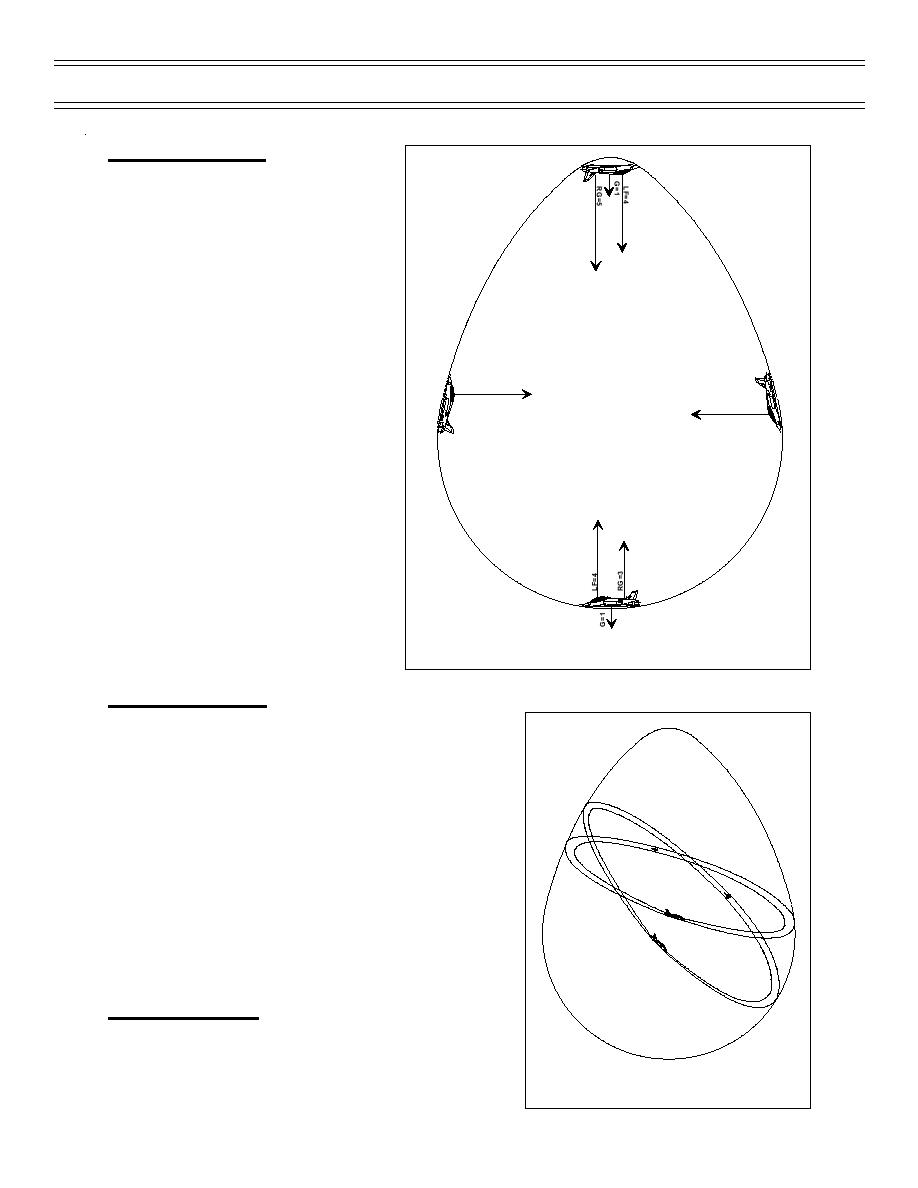
Air Combat Maneuvering
Background
Vertical Maneuvering
Figure 3 represents another theoretical
loop in the vertical plane at constant TAS
and constant indicated g. Unlike a purely
horizontal turn, your turn performance in
a purely vertical turn is affected differently
depending upon where you are in the
turn.
When the aircraft lift vector is above the
horizon (at the bottom of the egg), radial
g decreases because gravity opposes the
load factor of the aircraft, resulting in a
LF=4
RG=4
larger turn radius and a lower turn rate.
LF=4
RG=4
When the lift vector is below the horizon
(at the top of the egg when the fighter is
inverted), radial g increases because
gravity assists the load factor and lift,
resulting in a smaller turn radius and
faster turn rate. When the aircraft is pure
vertical (side of the egg) the load factor is
parallel to the horizon and, therefore,
equals radial g, indicating an intermediate
turn performance. So when your lift
LF = LOAD FACTOR
G = GRAVITY
RG = RADIAL G
vector (load factor) falls below the
horizon, gravity assists your turn
Figure 3: VERTICAL MANEUVERING
performance.
Oblique Maneuvering
In short, you will seldom maneuver in either the pure
vertical or the pure horizontal; rather, you will be trading
airspeed for altitude in an infinite variety of oblique
planes. As you develop your ACM skills, you will learn
how to use the oblique to turn as tightly and quickly as
you can while conserving the greatest amount of energy
possible, thus preventing you from approaching the deck
out of airspeed and ideas. Picture yourself in one of the
aircraft shown in Figure 4. Notice that one is performing
an extremely steep oblique loop, while the other aircraft is
more horizontal, yet still oblique. As you maneuver in all
three dimensions, base your decision to trade airspeed
for altitude on what the situation calls for during an
engagement.
Geometry of Tactics
We can deduce that, regardless of the plane of maneu-
vering, when the lift vector is above the horizon it detracts
from turn performance; conversely, when the lift vector is
below the horizon it enhances turn performance.
Figure 4: OBLIQUE MANEUVERING
Page 5
(10-98) Original



 Previous Page
Previous Page
